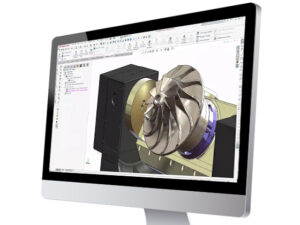If you’re reading this, there’s a very good chance you’re in the product design, manufacturing, document management, or marketing world.
And you’ve learned to rely on certain tools of your trade. Perhaps you carry them in a toolbox and they’re made of steel and plastic and wood and glass. Perhaps you downloaded them from a software manufacturer and they’re made of logic and code and a graphic user interface.

And with them you do your work and, I’m sure, do it well.
Staying Driven & Creative
But what drives you? Is it a paycheck? Real or imagined security? Some sort of status or acclaim? All are perfectly legitimate motivators. I’ll bet, however, that that’s not all.
You’re a creative person and that’s why you were hired. You translate others’ needs into a viable product, workflow, or result. You ideate. You modify. You tweak. You perfect. You perform the wondrous alchemy of turning things from the abstract to the concrete, to steel and plastic and wood and glass.
You innovate.
What is the primary ingredient of innovation? I contend that it’s inspiration.
Use Your Favorite Inspiration Sources
Usually in this space you’ll find SOLIDWORKS tips, tricks, and articles. If you’re a regular reader, I am confident you’ve found all our GSC authors to be as knowledgeable as any in the field. SOLIDWORKS has grown so popular, I believe, because it doesn’t stand in your way; as one of our customers once put it, “it works like I think.” In other words, we have no roadblock between inspiration and design.
Where does this inspiration come from? I’ve pondered this for a series (1, 2, 3) of articles now. Speaking for myself, there are many people that can crystallize the essence of design (and its corresponding tools) to a brief, memorable quote. A few months ago, I began to share some favorites; this month I’ll add some more.
The only important thing about design is how it relates to people.
Art is an idea that has found its perfect visual expression. And design is the vehicle by which this expression is made possible. Art is a noun, and design is a noun and also a verb. Art is a product and design is a process. Design is the foundation of all the arts.
The real problem with the interface is that it is an interface. Interfaces get in the way. I don’t want to focus my energies on an interface. I want to focus on the job…I don’t want to think of myself as using a computer, I want to think of myself as doing my job.
The design instinct, above all, is about viewing the world around you as a place filled with opportunities to add more thoughtfulness and care.
In design man becomes what he is. Animals have language and perception as well, but they do not design.
Good design is obvious. Great design is transparent.
Our opportunity, as designers, is to learn how to handle the complexity, rather than shy away from it, and to realize that the big art of design is to make complicated things simple.
The public is more familiar with bad design than good design. It is, in effect, conditioned to prefer bad design, because that is what it lives with. The new becomes threatening, the old reassuring.
A good designer finds an elegant way to put everything you need on a page. A great designer convinces you half that [stuff] is unnecessary.
Styles come and go. Good design is a language, not a style.
It is true that great design seems transparent, we almost never even “see” it. We so easily spot bad designs, though! Here’s to the human alchemists that can distill ideas into the physical world, with products that work like we think.
Share
Meet the Author

